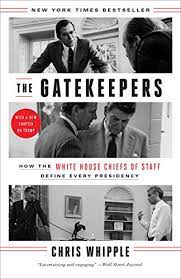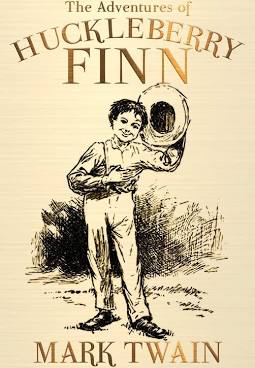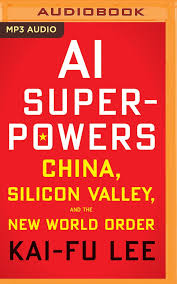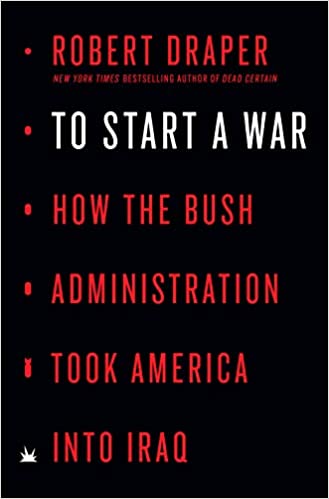
RATING
3 stars
N/A = good but not on the scale
1 star = perspective supplementing
2 stars = perspective influencing
3 stars = perspective altering
SHORT SUMMARY (272 words or less):
Surprisingly, this book morphed from a being a digestable primer on quantum mechanics and into a canonized text on existential philosophy. I’ve been an on again/off again student of the Vedanta tradition and aspects of the Buddhist tradition of Madhyamāpratipada (or “The Middle Way”). This book unified my nascent spiritual interests with my long standing affinity towards science.
The power of this book comes from the permission it gives to quantum mechanics. The concepts explored here confer an ambiguity about reality, and in that ambiguity, there’s permission to logically explore the spiritual and the supernatural, and possibly the Divine. In the face of theories of superposition, Psi waves, “many worlds” interpretations, entanglement, etc., we learn that conscious observability can have an effect on the material world. But we also learn that observability is only half the story. It’s merely a flashlight into a possible deeper reality. In other words, I’m starting to wonder whether the study of quantum mechanics gives cover for scientists, rationalists, skeptics, and the dissatisfied to search for God. When a book gives you that, it’s worth reading.
I am now curious about the power of observation. How does observation cause superposition to “resolve” and entanglement to make some sense. What’s the relationship of this to mindfulness? If we, as a conscious observer, influence the material existence of subatomic particles, or at least nudge them to particular states, what does that say about our power of observation itself. And how do we avoid steering this thought towards witchcraft and away from science? It’s an open question, as to to how deterministic nature truly is. Does God play dice?
LONGER SUMMARY/SCRIBBLES
This book was incredibly succinct for a topic this deep, but there was also a lot of content that I’d like to get down to read about in the future.
Quantum leaps = electrons jumping orbits
The power of the what before the why? Heinsenberg tried to answer the question of why electroncs areq quantized. He approached this by first measuring observable light that electrons emit as they leap from one of Bohr’s orbits to another. Then he tried to understand it. A quote from Heisenberg:
“When the first terms seemed to come right [giving Bohr’s rules], I became excited, making one mathematical error after another. As a consequence, it was around three o’clock in the morning when the result of my calculations lay before me. It was correct in all terms. Suddenly I no longer had any doubts about the consistency of the new “quantum” mechanics that my calculation described. At first, I was deeply alarmed. I had the feeling that I had gone beyond the surface of things and was beginning to see a strangely beautiful interior, and felt dizzy at the thought that now I had to investigate this wealth of mathematical structures that Nature had so generously spread out before me.”
The author of this book adds his own quote: “Nothing is like the emotion of seeing a mathematical law behind the disorder of appearances.”
I often say to people, that I feel a spiritual resonance with the universe when I have studied some mathematical concepts. To me, it almost proves the existence of God, the beauty and simplicity of certain equations. The famous E = mc^2, but also, Euler’s Identity and Maxwell’s Equations. The ability to describe complicated properties of the physical world, the the association between physical phenomenon (like electricity and magnetism) so beautfiully.
The dilemma between particle and wave theory. Schrodinger used a probabilistic technique called the “Psi” wave to explain the movement of electrons. Much like a ripple of waves in the water when you drop a pebble, the Psi wave equation describes the probability that electrons will be in certain positions. Wave theory is confirmed by matrix algebra. So it seems like, it’s correct, that electrons don’t exist in a particular point, but they are described by probabilities of where they might exist. But that’s an illusion due to observation. When observed, the electrons arrive at a single point. When not observed, they are described by the wave equation. This raises the central question: how does observation affect the material outcome. And how does this relate to mindfulness.
The author says that quantum mechanics is described by three concepts:
(1) granularity: energy is granular. It’s distributed in packets. For example, heat distributes in quantized packets and not continuously. Max Planck discovered this, that heat is transmitted to electromagnetic waves of discrete frequencies, only integer multiples of elementary energies. In other words, energy is quantized. Einstein extended this to say that electromagnetic waves and light are made of quantized particles, what we call photons today.
(2) Probability – described by the “psi” waves
(3) Observation – the tendency of electrons to act like a particle upon observation.
Quantum theory adds an equation to classical physics. It states that multiplying the position by the velocity is different from multiplying the velocity by the position. The author says that “it’s beautifully compact, but also incomprehensible.” The equation is: XP – PX = ih, where X = position of a particle, P = momentum (speed times mass0, i = square root of -1, and h is Planck’s constant.
The idea of quantum superpostion: when two contradictory properties are present together. The bizarre thing is that we never actually see a quantum superposition, we only see the consequences of superposition (called “quantum interference”). The very strange thing is that the act of observation changes the superposition state! In other words reality changes based on a conscious observation!
This made me think of something: how humans observe the Universe. If we assume that technological, industrial, and political progress enables human societies to make deeper observations, can we also assume the reverse, that ancient societies were more limited in their ability to observe. And if they had limited abilities to observe, where there more instance of superposition around them? Were multiple things allowed to coexist because there was no capacity to observe them?
The “Many Worlds” theory. The crux behind this theory is to treat the Psi wave as a real entity and not a probability wave. So in the famous Schrodinger cat thought experiment, the cat is both alive and dead, the act of observation “forks” a new universe in which the cat is either in either an alive or dead state after observation, but in another world, the cat is in in the opposite state that’s observed in the first. But they both exist. That is incredibly trippy. In other words, the Psi wave separates into two parts: one representing a version where you see the cat alive and one representing a version where you see the cat dead. It sounds crazy but many prolific physicists and philosophers believe this.
It made me ask the question. Can the Psi wave be God?
The “Hidden Variables” theory: The idea here is almost like the Psi wave is real, but it only guides objects. The particles themselves are not in quantum superposition, they are always in a single position, it’s just that the Psi wave has a component of an “empty” state and a “real” state.
But this theory is incomplete. Either all the variables are present, which would lead to Many Worlds interpretations, or all there are not Many Worlds, but the variables in the single world are hidden. It begs the question, which is more comforting, the thought of many worlds of existence but no predetermination, or a single known world, but unknown variables behind it. And how does that relate to different traditions, particularly dualism versus non-dualism. As the author states “is it worth assuming the existence of an unobservable world, with no effect not already foreseen by quantum theory, only to assuage our fear of indeterminacy”
Relations in quantum mechanics and the interconnectedness of things. The author postulates a theory. The observation that scientists and their measuring instruments are all a part of nature. And so quantum mechanics is the way in which one part of nature manifests itself to any other single part of nature. “A tree absorbs sun’s rays, produces the oxygen that villagers breath while watching the stars, and the stars run through the galaxies pulled by the gravity of other stars…the World that we observe is continuously interacting. It’s a dense web of interactions.
This part was highly important to me as it relates to the Vedic concept of Karma and Dharma. If an object had zero interactions, it would not exist. What we call “reality” is a web of interactions, and you as a conscious actor have the ability to influence your interactions. Thus, you have the ability to influence reality.
Another thought is the analogy of reality as a web of interactions to Metcafe’s law–the value of your existence is equal to the square of the number of interactions as you can have in this web. Just food for thought.
Another Vedic concept that this reminded me is the idea of Turiya. In Vedantic traditions, there are three states of consciousness — the waking world (Jagrat), the dreaming world (Svapna), the deep sleep (Susupti). Turiya is this idea that consciousness pervades these three states. “Deep sleep” consciousness might be squared with Heisenberg’s intuition was that asking the orbit of an electron when it is not interacting with anything is an empty question. If the electron is not interacting, there are no physical properties. But it still exists. It’s ability to exist is analogous to me to the concept of Turiya, and the no physical properties existence is analogous to the deep sleep consciousness Susupti. The Turiya is still there, it’s just in the Susupti state due to the lack of interaction. Does Turiya explain the idea of superposition as well?
A quote from Schrodinger in the book that further adds to the Vedantic flavor of quantum mechanics:
It is better to consider a particle not as a permanent entity but rather as an instantaneous event. Sometimes these events form chains that give the illusion of being permanent, but only in particular circumstances and only for an extremely brief period of time in each individual case.
The concept of quantum entanglement: “a phenomenon by which two distant objects maintain a kind of weird connection even across far distances.” Chinese scientists have succeeded in producing two entangled photons on a satellite and sending them, still entangled, to two stations at a distance of thousands of kilometers from each other on eart.
Entanglement essentially means correlated features. If one is read, the other will be blue. An example to shed light, if you take a pair of gloves of the same color and send one to Beijing and one to Vienna, the one arriving to Vienna will the same color as the one arriving to Beijing. So far so good. But the weirdness is quantum particles are in quantum superposition. So in the example, the gloves could be in a superposition where they are both red and both blue. Remember that observation can resolve quantum superposition, so the act of observing one glove in Beijing as being red will mean that the one arriving in Vienna will also be red, even though they both are in superposition. The theory is that each of the photons (or gloves) is not definitively red or definitively blue until it interacts. But how can the color randomly determined in Vienna be the same as the color randomly determined in Beijing?
The author postulates two possible explanations: The first is that the signal of the color of one photon travels extremely rapidly to the other far off photon, and it communicates instantly to the entangled photon. The second (more reasonable according to the author) is that the color was already determined at the moment of separation, even if we were not aware of it. The first theory would violate the speed of light speed limit for instantaneous communication across space-time. The second theory had been disproven in an article written by a physicist John Bell in 1964 . Basically Bell showed that if all the correlated properties of the two photos had been determined from the moment of separation, precise consequences would follow (called “Bell inequalities”) that are contradicted by what we actually observe. So we know for sure that they aren’t determined at the outset. So neither theory works.
The author postulates a third interpretation. That quantum entanglement only matters in relation to a third entity that is measuring it. The combination of the colors does not exist in relation to anything. But here’s the problem with the relational explanation. the two objects then don’t even exist until a relationship to a third is determined. So it comes at the cost of feeling like reality is all relative. The question still remains, what connects them? And this is where my head starts to hurt.
Another good example of quantum entanglement: if a cake is in superposition with a bunch of different temperatures, then with respect to the thermometer, the cake has manifested its properties, but with respect to a third system of any kind that doesn’t participate in the interaction, no property has manifested. The cake and the thermometer are entangled.
There’s a lot more in this book, but honestly, the content is almost too heavy to read and digest because it causes unresolved questions about the nature of reality. But certainly this book expanded my mind in so many ways.







